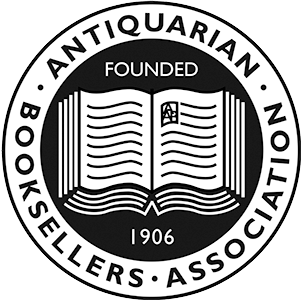Natural History: London. Printed for the author by Taylor and Francis. 1862-1873. Original hand-coloured lithograph of the Sparrow Hawk from John Gould's "Birds of Great Britain " Volume 1; Plate 10. The plate shows a pair of hawks, that in the rear having caught a sparow amongst the ivy, a lucky sparrow escapes. Bright & good. John Gould (1804- 1881) Ornithologist, first trained as a taxidermist, opening a business in London in 1824. In 1827 he became the first Curator and Preserver at the Museum of the Zoological Society of London; there he oversaw the collection of birds from Himalaya which led to his first published work "A Century of Birds from the Himalaya Mountains" [ 1830-32]. Throughout his life he eventually published 41 volumes with approximately 3000 plates. covering birds of Europe, Great Britain, Asia, Australia and Papua New Guinea. The works were published in livraisons, by pre-paid subscrption, each part cost three guineas. In the early works he was aided in the creation of the plates by his wife Elizabeth Gould, Edward Lear and others. Gould died in February 1881 having completed the first 12 parts of " The Birds of New Guinea and the adjacent Papuan Islands, including many new species recently discovered in Australia. " As the title suggests he intended the work to supplement the "Birds of Australia" with the newly discovered species. The University of Glasgow, which owns a copy of Birds of Great Britain, describes John Gould as "the greatest figure in bird illustration after Audubon". Gould had already published some of the illustrations in" Birds of Europe", but "Birds of Great Britain "represents a development of his aesthetic style in which he adds illustrations of nests and young on a large scale. Gould published the book himself, producing 750 copies, Issued in London in 25 parts, to make the complete set, between 1863 and 1873, and each set contained 367 coloured lithographs. Gould undertook an ornithological tour of Scandinavia in 1856, in preparation for the work, taking with him the artist Henry Wolf. The majority of the sketches were drawn from newly killed specimens capturing the distinctiveness of each species. Gould then oversaw the process whereby his artists worked the sketches up into the finished drawings, which were lithographed by William Hart. The lithographs were hand coloured, and, in writing the introduction for the work, Gould states "every sky with its varied tints and every feather of each bird were coloured by hand; and when it is considered that nearly two hundred and eighty thousand illustrations in the present work have been so treated, it will most likely cause some astonishment to those who give the subject a thought." The work gathered critical acclaim: according to Mullens and Swann, Birds of Great Britain is "the most sumptuous and costly of British bird books", whilst Wood describes it as "a magnificent work". Isabella Tree writes that it "was seen - perhaps partly because its subject was British, as the culmination of [his] ... genius"was seen - perhaps partly because its subject was British, as the culmination of [his] ... genius". Anker p. 60; "Fine Bird Books"; Nissen 372; Sauer 23; Natural History John Gould, Great Britain Sparrow Hawk Accipiter Nisis






